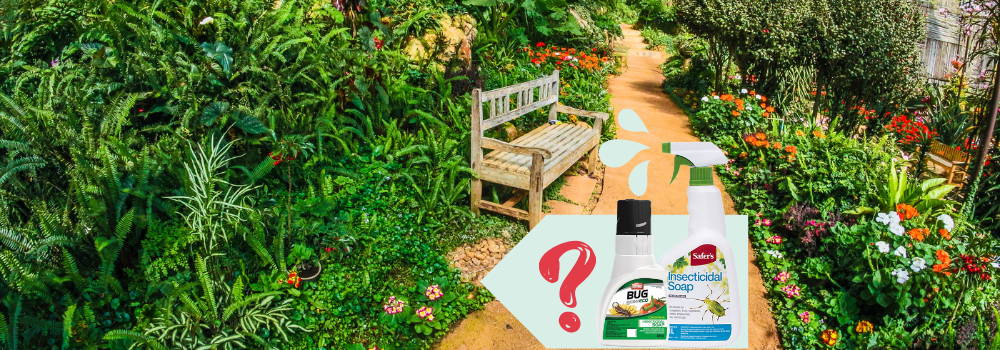How to Use Insecticidal Soap
Insecticidal soaps are favoured by organic gardeners due to their low toxicity and residual effect. These products work by dissolving the waxy coating and disrupting the cell membrane of soft-bodied insects and pests such as aphids, spider mites, immature leafhoppers and whiteflies, scales, mealybugs, thrips, and the eggs of other insects.
If used correctly, insecticidal soaps are more effective than traditional insecticides because they have no residual effect and only work upon direct contact with pests. Insecticidal soaps are non-toxic and biodegradable. They kill target insects or pests without harming beneficial insects like pollinating bees, predatory wasps, and lacewings as well as birds.
How the Insecticidal Soap Works
Insecticidal soaps contain potassium salts of fatty acids that pose a lower toxicity risk to plants. The potassium salts of fatty acids penetrate the exoskeleton of the insect and disrupt the permeability and structure of cell membranes. The insect will become dehydrated and eventually die.
Insecticidal soaps are available as RTU-Ready to Use sprays and liquid concentrates. Whether you make your insecticidal soap or buy RTU sprays, this harmless solution promises to eliminate your garden pest problems without harming your plants. You can apply insecticidal soap as part of your organic pest control methods.
How to Use Insecticidal Soap on Plants
You should know how to use insecticidal soap spray properly so that you can maximize its benefits and solve your pest problem once and for all. Keep these tips in mind when using RTU-Ready to Use sprays on plants.
Avoid Sensitive and Stressed Plants
Some plants are sensitive to insecticidal soap and susceptible to damage. Examples of such plants include succulents, ferns, lantana, azaleas, palms, some tomatoes, ivy, and plants that have waxy leaves.
You should also avoid spraying blooming plants and delicate new growth with insecticidal soap sprays. Avoid wilted and stressed plants as well.
Water the Plants
Do not forget to water the plants before treating them with insecticidal soaps. Shake the solution well before using it.
Test First
Test the solution first on a branch or leaf to make sure that the plants can tolerate the product. Check your plants after 24 hours. Look for scorched or burned spots on the leaf.
If there is none, you can proceed with the treatment. But if you find signs of damage, you can dilute the solution in half and test it again. If it does not work, do not treat the plant with the product.
Apply Thoroughly
Since many soft-bodied pests often hide on the underside of leaves, make sure to spray both the bottom and top of leaves and the stems with the solution. You need to cover the plant surface with enough soap to make the stems and plant leaves wet. That is the only way to make the insecticidal soap work. Any unsprayed insects will survive if they are not treated with insecticidal soap.
Repeat Treatment
Repeat the treatment process every 4 to 7 days. Since insecticidal soap kills soft-bodied when they are wet, you should treat your plants in the evening or early morning. The leaves will stay wet longer, so the product will be more effective as well.
Some of the insecticidal soaps that we recommend are Safers Insecticidal Soap RTU 1L, Ortho Bug B Gon Eco Insecticidal Soap RTU 1L, or the Safers 3-In-1 Spray RTU 1L.
How to Use Concentrate Insecticidal Soap on Plants
If you are using soap concentrate, you must dilute it with soft water first. Hard water will make the soap less effective. Once you have diluted the product, test it on a few leaves first. If you do not see any sign of damage, spray the rest of the plant with the solution.
For the concentrate insecticidal soap, we recommend Safers Trounce 500ml Turf C8, Ortho Bug B Gon Eco Insecticidal Soap Conc 500ml, and Safers Insecticidal Soap Concentrate 500ml.


